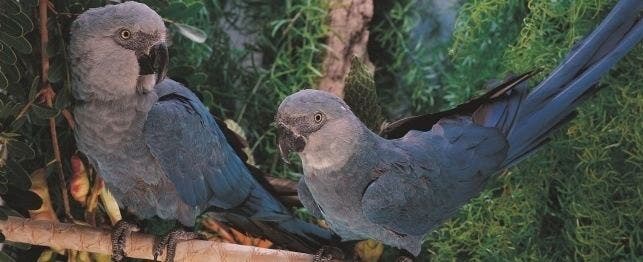
The Spix’s Macaw – A Fading Beauty
Spix’s macaw (Cyanopsitta spixiii) was thought to be extinct in the wild until birds were rediscovered in the late 1980s. Now a single wild male bird exists in their native habitat on the Rio Sao Francisco in the state of Bahia in Brazil.
Spix’s macaw has a very limited range and the existing habitat has been severely damaged, although some suitable habitat still exists, tababuia dominated gallery woodland growing along creeks. They nest and feed in Tabebui trees.
Appearance
Spix’s macaws are a medium sized, light blue-grey macaw. The beak is black, the feet gray and the undersides of the tail and wings are dark grey. The tail is long and tapered.
Breeding
The single wild male is currently paired with an Illigers macaw. They have laid eggs and have reared Illigers chicks, which were placed in their nest. In 1994 a captive female was released to repair with him but she disappeared and it was recently revealed that she died when she flew into power lines. Approximately 50 birds now exist in captivity and are being bred to supply birds for reintroduction efforts, however most of the captive population is closely related.
Spix’s macaws have been successfully bred in the Phillippines, Switzerland and in Spain and the captive population is making steady gains. The owners of captive birds cooperate in a consortium known as the Permanent Committee to Restore the Spix’s Macaw and are working in cooperation with Brazilian wildlife authorities. Plans are being made for future re-introductions.
Through the work of the permanent committee to restore the Spix’s Macaw, the dedication of field researchers, the sponsorship of donors such as the Loro Parque Foundation and the support of IBAMA, there is hope in the future for this beautiful bird to survive. For more information on Spix’s Macaws visit Loroparque-fundacion.org.